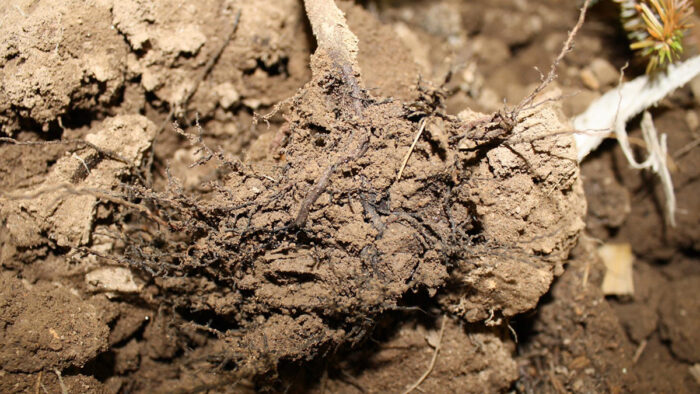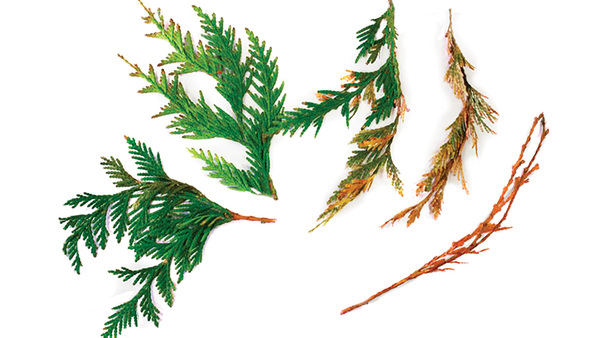
Got a plant with wilting leaves even though it is getting plenty of water? Your plant might have a root-rot disease. A close relative to other diseases like sudden oak death and crown rots, root rot is caused by oomycete pathogens. This is a condition you don’t want your plants to get, as there is rarely a favorable outcome.
What is root rot exactly?
While they behave in many ways like fungi, oomycetes are not true fungi but are instead a group of relatives commonly called “water molds.” This is due, at least in part, to the group’s association with wet soil conditions. Oomycetes release spores that travel through water to reach healthy tissue and cause new infections. These spores can be asexual (sporangia) or sexual (oospores), though for many species, sexual spores are primarily observed in laboratory settings.
Common oomycete pathogens of plants include Phytophthora species, Pythium species, and downy mildew (family Peronosporaceae). All are common pathogens of a wide variety of plants. Pythium and Phytophthora species commonly cause root and crown rots. Nearly all plants are, to some extent, susceptible to root rot and typically do not recover once infected.
What does root rot look like, and what can I do about it?
Root-rot diseases can be destructive and difficult to manage. Symptoms include wilting, leaf discoloration, vascular discoloration, root discoloration, and lesions that may girdle the stem at the soil line. If you see leaves wilting despite available water, dig up a few roots; if they are dark, weak, and unhealthy looking, you may be dealing with root rot. Here are some tips for managing and preventing root rot.
1. Remove and destroy the plant
Root-rot pathogens can survive in wet soil and move between plants, so it is important to remove sick plants promptly when they are observed. If you are concerned about a pathogen spreading to healthy plants nearby, consider submitting the diseased plant for analysis to a plant diagnostic lab. A lab can provide pathogen identification and management recommendations.
2. Provide good drainage and avoid overwatering
To prevent root rot, the most important strategy is not to overwater. Make sure you place your plant in a spot with good drainage, and choose less susceptible, water-loving plants for wet areas in your garden. If you aren’t sure if your plant needs water, simply place your finger in the soil near the roots. If you can feel damp soil before your first knuckle (1 to 2 inches), do not water. Most plants require less water in fall and winter, as they aren’t photosynthesizing and transpiring to the same degree that they do the rest of the year.
3. Minimize the risk of further contamination
Since the pathogen can move from one plant to another and throughout the growing medium, don’t compost sick plants or allow them to remain in your garden. Likewise, keep your gardening supplies clean by disinfecting tools, pots, flats, and other things that may have come in contact with sick plant tissue. Easy-to-use disinfectants include 70% ethanol (rubbing alcohol) or 10% diluted bleach (1 part bleach, 9 parts water) sprayed on the surface and allowed to dry.
—Nicholas Goltz, DPM, is a plant pathologist and extension educator located in the northeastern United States, where he helps growers and homeowners find holistic and comprehensive solutions for plant problems.
Fine Gardening Recommended Products

Corona Tools 10-Inch RazorTOOTH Folding Saw
Fine Gardening receives a commission for items purchased through links on this site, including Amazon Associates and other affiliate advertising programs.

Greenworks 40V 14" Chainsaw, 2.5Ah USB Battery and Charger Included
Fine Gardening receives a commission for items purchased through links on this site, including Amazon Associates and other affiliate advertising programs.

Okatsune 103 Bypass Pruners General Purpose Medium
Fine Gardening receives a commission for items purchased through links on this site, including Amazon Associates and other affiliate advertising programs.






















Comments
Log in or create an account to post a comment.
Sign up Log in